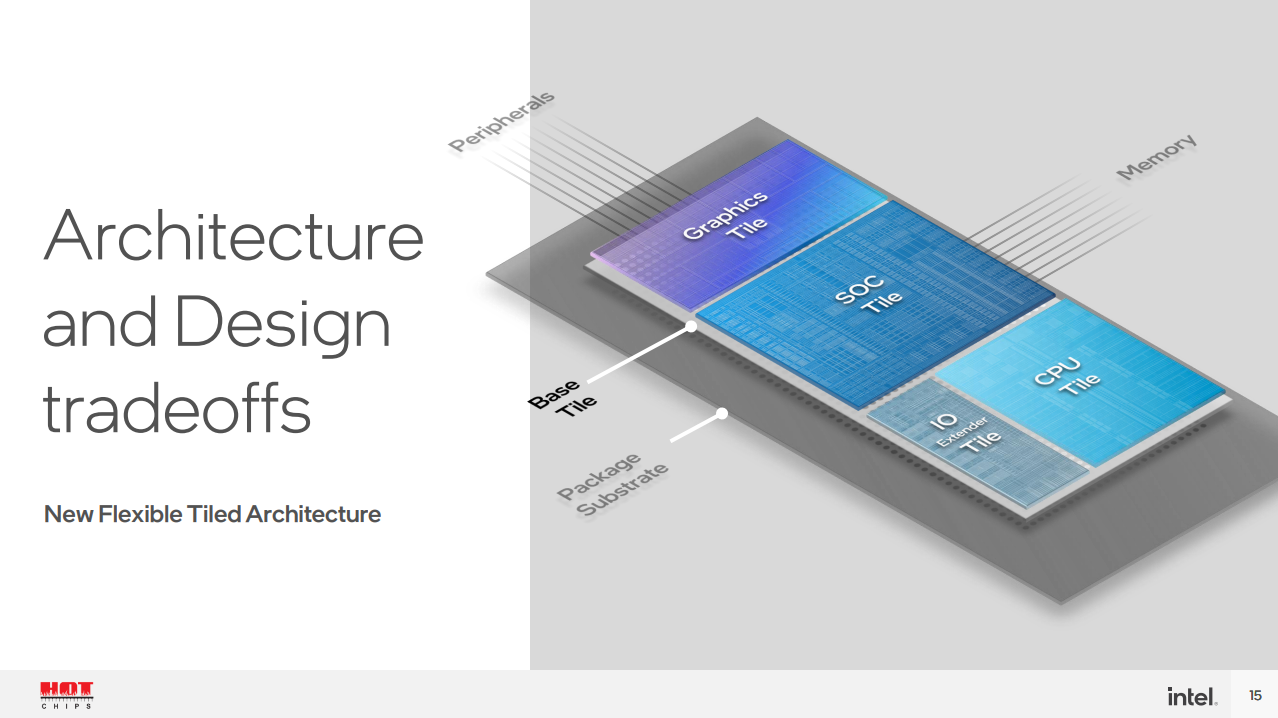Intel Reminds Everyone It's Still Cooking Away On More PC Processors

Intel claims it has hit a key technology milestone for its next generation of Core processors for PCs, heralding a major change in how its client chips are designed and manufactured.
The silicon-slinger plans next year to release the next wave of CPUs for PCs – code-named Meteor Lake – which will succeed the 13th-Gen Core chips for desktops that debuted in September.
A key change for the next-gen lineup – which will likely carry the name 14th-Gen Core unless Intel decides to change the branding – is that the processors will adopt a chiplet design.
That means instead of the processor consisting of a single monolithic die like the 13th-Gen chips and previous generations, Meteor Lake will be made up of four chiplets – or tiles, as Intel calls them – that perform different functions, such as the CPU's cores, integrated graphics, and I/O operations. The tiles will be grouted together using Intel's Foveros packaging technology.
A key benefit of a chiplet design is that designers can choose which manufacturing technologies are best for each chiplet. That can help them find the right balance between cost, performance, and efficiency.
- TSMC reportedly looks to raise a second Arizona chip fab
- After spate of delays, Intel promises Sapphire Rapids Xeons for early 2023
- AMD was right about chiplets, Intel's Gelsinger all but says
- With its Ohio fab under way, Intel's next challenge: Keeping its promises
This week, Intel announced the process node for Meteor Lake's compute tile is ready for manufacturing ahead of its planned launch.
This node is known as Intel 4, but was previously called the 7nm process. It was renamed, according to the processor giant, to better represent how it compares to similar technologies from rivals TSMC and Samsung.
While previous rumors have indicated Meteor Lake's graphics tile may be manufactured by TSMC using a different process node, Intel has yet to clarify. If TSMC does end up manufacturing part of Meteor Lake, that would mark another major change for an Intel client processor – given Intel's long history of manufacturing its most popular chip designs.
You may remember that the chip giant had delayed production of Intel 4 in 2020 due to manufacturing yield issues. Those issues are evidently sorted.
Back in June, the chipmaker said it was on track to deliver a 21.5 percent performance improvement for Intel 4 over Intel 7, which is used for Intel's 12th-Gen and 13-Gen Core processors. Conversely, Intel 4 can provide the same frequency level as Intel 7 using 40 percent less power.
When Intel does end up releasing its Meteor Lake chips, the company will finally catch up with AMD. The rival chip shop turned to chiplet designs years ago and took client market share from Intel with its Ryzen lineup. For the datacenter side, early next year the x86 giant plans to launch Sapphire Rapids CPUs, which will be its first server chips to use a chiplet design. ®
Taking Flight: Volocopter's Quest To Revolutionize Urban Mobility Gains Momentum
Volocopter, a pioneering company in the field of urban air mobility, is on a mission to transform how people move around... Read more
OnlyFans Under The Microscope: Addressing Concerns Over Child Safety
Concerns Over Child SafetyOnlyFans' ResponseRegulatory ActionsCollaborative EffortsFuture DirectionsConclusion Read more
The AI Arms Race: Big Tech's Bid For Dominance In Artificial Intelligence
In the rapidly evolving landscape of technology, the race for dominance in artificial intelligence (AI) has intensified ... Read more
Decoding The Impact Of OpenAI's Sora Video Model On Industries And Jobs
In the realm of artificial intelligence, OpenAI's Sora video model stands out as a groundbreaking innovation, promising ... Read more
Apple Poaches Top Talent From Google To Strengthen AI Team
As artificial intelligence (AI) continues to shape the future of technology, companies are intensifying their efforts to... Read more
Meta's Bold Move: How Chatbots Are Reshaping The Tech Landscape
In a strategic pivot that has sent ripples across the tech industry, Meta has embarked on a bold journey into the realm ... Read more

